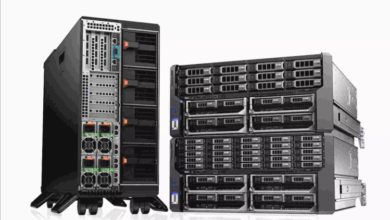What are the security challenges associated with the widespread adoption of cloud computing, and how are they being addressed?

Introduction to Cloud Computing Security Challenges
Cloud computing has transformed how businesses operate by offering scalable, efficient, and cost-effective solutions. However, as the adoption of cloud services increases, so do the concerns regarding data security and privacy. In this article, we delve into the significant security challenges posed by cloud computing and discuss the strategies employed to mitigate these risks.
Understanding the Security Risks of Cloud Computing
One of the primary concerns in cloud computing is the vulnerability of data. Data breaches, loss of data integrity, and unauthorized access are some of the critical risks that organizations face. These issues stem from various factors including inadequate access controls, shared computing environments, and the complexity of securing a cloud architecture.
The Impact of Data Breaches in Cloud Environments
Data breaches in cloud computing can have devastating consequences, ranging from financial losses to severe reputational damage. The shared nature of the cloud makes it essential for cloud service providers (CSPs) to implement robust security measures to protect sensitive information from cyber threats.
Strategies for Ensuring Data Integrity in the Cloud
Maintaining data integrity involves ensuring that the information remains accurate and unaltered during transfer, storage, or processing. Techniques such as data encryption, regular audits, and the implementation of strong access controls are critical in preserving the integrity of cloud data.
Addressing Privacy Concerns in Cloud Adoption
Privacy concerns in cloud computing primarily revolve around the unauthorized use or exposure of private information. Compliance with regulations such as GDPR and HIPAA is crucial for CSPs to ensure that they handle user data responsibly and transparently.
The Challenge of Identity and Access Management (IAM)
Effective IAM is crucial in preventing unauthorized access to sensitive data. Cloud providers and users must collaborate to implement policies that ensure only authorized personnel have access to specific data sets. Advanced IAM solutions include multi-factor authentication and user behavior analytics.
Mitigating Insider Threats in Cloud Computing
Insider threats are a significant concern in any organization but pose a unique challenge in the cloud environment due to the scale and accessibility of the cloud. Strategies to mitigate these risks include rigorous screening processes, continuous monitoring of user activities, and the implementation of least privilege principles.
The Role of Encryption in Cloud Security
Encryption is one of the most effective tools for protecting data privacy and integrity in the cloud. Encrypting data at rest, in transit, and in use helps prevent unauthorized data breaches and ensures that data is only accessible to those with the decryption keys.
Utilizing Cloud Security Posture Management (CSPM)
CSPM tools help organizations manage and secure their cloud environments by continuously monitoring for misconfigurations and non-compliance. These tools are essential for maintaining a strong security posture and responding promptly to potential vulnerabilities.
The Advancement of Threat Detection and Response
Cloud environments require sophisticated threat detection systems due to the vast amount of data and the high rate of transactions. AI and machine learning are increasingly being utilized to enhance the capabilities of threat detection and response systems, providing real-time security insights.
Implementing Robust Disaster Recovery Plans
Disaster recovery is an essential part of cloud security, ensuring that services can be rapidly restored following an outage or breach. Effective disaster recovery plans are characterized by frequent backups, failover mechanisms, and the capability to restore operations with minimal downtime.
The Future of Cloud Security: Trends and Innovations
As cloud computing continues to evolve, so do the strategies for securing it. Emerging technologies such as quantum computing, blockchain, and edge computing are set to play significant roles in the future of cloud security by potentially offering new ways to manage and mitigate risks
Conclusion
The security challenges associated with the widespread adoption of cloud computing are significant but not insurmountable. Through robust security measures, continuous innovation, and collaboration between service providers and users, the integrity and privacy of cloud-stored information can be protected. As technology advances, so too will the solutions designed to secure our data in the cloud, helping organizations navigate the complexities of cloud adoption with confidence.






